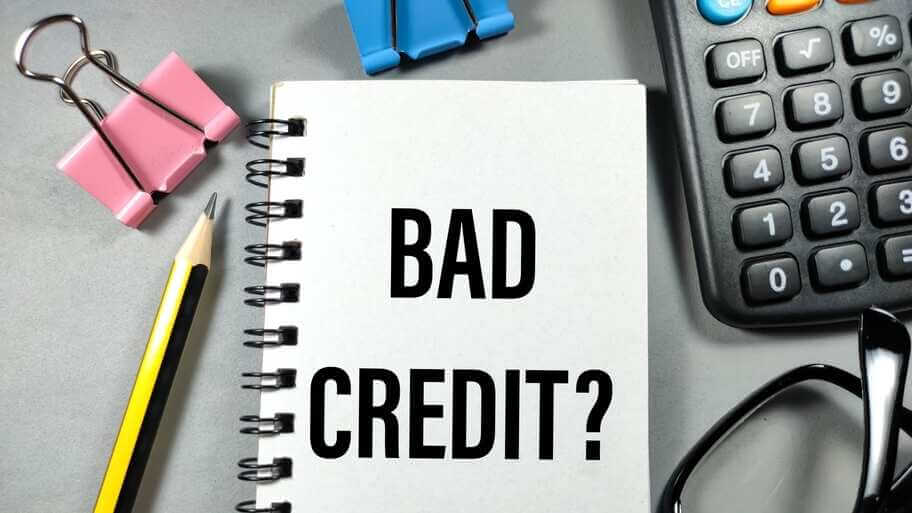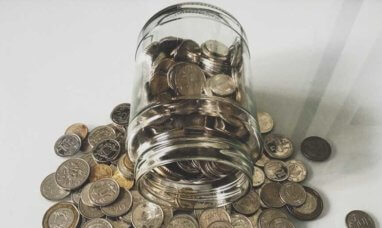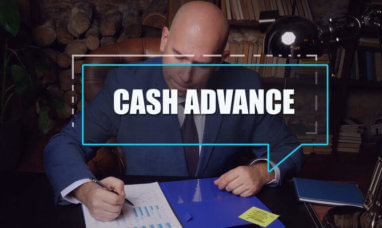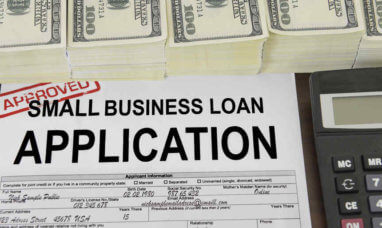Bad credit is more common than you think, and sometimes you may need to get a personal loan with bad credit.
Financial stressors, an inability to repay loans on time, and poor borrowing habits can leave you stuck with a poor credit score. Despite the hurdles that come with bad credit, taking out a new personal loan isn’t impossible.
There are several financial factors that banks take into account when approving you for a loan and your credit score is one of the big ones. This article will outline the steps for taking out a personal loan when you have bad credit.
How Bad Credit Affects a Personal Loan Application
In the banking world, bad credit, or low credit scores, are generally taken as an indication of poor borrowing habits.
Credit scores are one of the main factors that banks take into account when deciding whether or not to approve you for a loan. They also come into play when calculating the interest rate of your loan.
Because banks judge individuals by their credit scores, those with higher scores are more likely to succeed in getting a loan at an affordable rate. On the other hand, those with poor scores may find it tricky to get their loan application approved, or may be lent limited amounts at higher interest rates.
For example, if your score ranges between 720 and 850, your estimated APR will be around 11.8%. However, having a score between 630 and 689 will land you an estimated APR of 23.4%, if your loan application even gets accepted.
As a rule of thumb, the lower your credit score (or the more “bad debt” you have), the higher your loan’s interest rate will be. This is partly because banks want to discourage poor borrowers from taking out a new loan. Poor borrowers have a history of missing payment deadlines, which is frowned upon by lenders.
The lower your credit score, the more risk lenders assume when providing you loans. If you already have a significant amount of debt and have missed payments in the past, banks assume that you may have trouble paying back a new loan.
Getting a personal loan with a high DTI (debt-to-income ratio) and bad credit is even trickier. Your DTI is the amount of debt you have as a percentage of your income. It is another important factor on your loan application that indicates to banks whether or not you can take on another loan.
How to Get a Personal Loan with Bad Credit
Getting a personal loan with bad credit is tricky, but not impossible. Here are some steps you can take to improve your chances of securing a loan with bad credit:
1. Review Your Credit Score
Start by analyzing your existing credit score and comparing it to your bank’s minimum credit score requirement. A score below 629 is likely to face loan application rejection, whereas a higher score stands a better chance of acceptance.
Make sure there are no mistakes on your credit report that are pulling down your score. If your score is simply too low, take some time to build your credit by focusing on paying off your existing debt on time.
2. Look into Different Lenders
Each lender has a unique set of rules governing their loan-related transactions. Looking into different options can help you shortlist those lenders which offer the best benefits (including low-interest rates and more relaxed repayment options) to individuals with bad credit. You may also look at getting loans from lenders with no credit check.
For example, if you’ve been looking into personal loans that use TransUnion only, you may want to consider working with a bank that’s supported by Equifax or Experian instead.
Once you have determined who the best lenders for you are, you can start preparing for pre-qualification.
3. Pre-Qualification Assessment
Pre-qualification gives you assessments of the terms, rates, and loan amounts that lenders are willing to offer you based on your financial situation. This allows you to review the details of a loan before you actually sign the papers. It can also tell you whether or not you are qualified to take out the loan.
Getting pre-qualified will not affect your credit score. You should get pre-qualified by several lenders to compare the loan terms available to you.
4. Co-Sign or Secure Your Loan
Co-signed loans are an excellent way to improve your chances of loan approval. Signing on a loan partner with an excellent credit score can even reduce the interest rate on your new loan. Your co-signer must agree to pay off your loan if you cannot, reducing the risk to the lender.
While most personal loans are unsecured loans, a secured loan is easier to qualify for and can come with lower interest rates. You will typically use a car, investment, or another substantial asset as collateral for these loans. If you don’t pay back the loan, the bank can take possession of the specified asset.
5. Select and Apply for the Loan
Once you have taken these steps, you can start filing for a new loan. This includes filling in a personal loan application, W-2 data, and financial statements. Be sure to collect all of these documents before you start the application process to avoid major delays.
Where to Get a Loan with Bad Credit
Credit unions and online quick cash lenders are some of the best options to get loans with bad credit. They are more inclined than mainstream banks to accommodate borrowers with bad credit.
Credit Unions
Borrowing from a credit union requires union membership. Non-members are not allowed to submit loan requests.
However, if you are a credit union member, you have the benefit of relying upon your history, relationship with the union, and positive reputation to boost your chances of loan acceptance.
Federally chartered credit unions offer lower interest rates than alternate lenders because they are legally obligated to limit their APRs to 18%. Be sure to check all of your options before committing to a lender’s terms and conditions.
Note: Obtaining long-term personal loans for blacklisted clients will be a near-impossible task. In such cases, it’s wiser to consider borrowing from friends or family, an online lender, or consider bringing on a co-signer to share the borrowing responsibility with you.
Online Lenders
If you aren’t currently a member of any credit union, you should consider borrowing from an online lender instead.
Avant and Universal Credit are popular online lenders who give out loans to applicants with poor credit scores. Not all online lenders attend to bad credit borrowers, but many do.
Note: Before borrowing from an online lender, be sure to check for and accommodate any possible deduction caused by the origination fee .
Also, avoid taking bad credit/blacklisted personal loans online from lenders offering “no-credit-check” loans. They may appear easy to borrow from initially, but once you’ve signed the paperwork, there’s a high chance you’ll be weighed down by a series of never-ending obligations that weren’t immediately obvious at the time of borrowing.
Calculate Bad-Credit Loan Payments
Calculating bad-credit loan repayments is easiest when done with an online repayment calculator. If you’re having trouble calculating it yourself, consider scheduling a meeting with a bank representative or qualified financial advisor, lawyer, or accountant.
Featured Image: Twenty20








